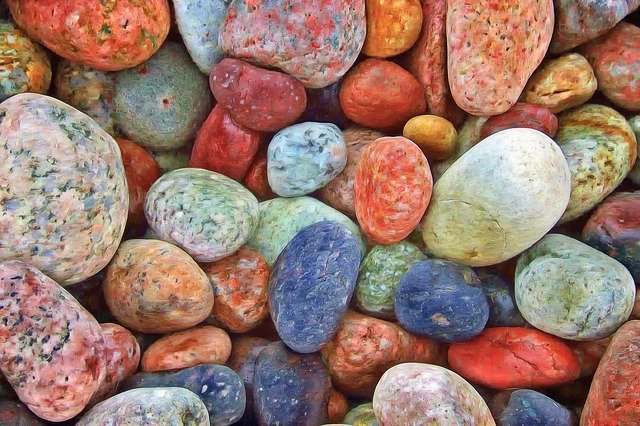
In honor of Earth Day, this month’s free online journey circle will hold the intention of growing into a more conscious and mutual relationship with Grandmother Earth.
Most of us in the Western world don’t know how to begin to communicate with Grandmother Earth, though She has provided for every aspect of our material lives, sheltering, feeding, and supporting us every step of the way.
In languages from cultures with a longer memory and more robust connection to Grandmother, “personhood” is often not limited to human beings.
In the Algonquian language of the Ojibwa, for instance, there is a grammatical distinction between animate and inanimate places and things. For the Ojibwa, the grammar of animacy even extends to stones:
I once asked an old Ojibwa man: “Are all the stones about us alive?” He reflected a long while and then replied, “No! But some are.” This qualified answer made a lasting impression on me. …The Ojibwe are not animists in the sense that they dogmatically attribute living souls to inanimate objects such as stones. …It does not involve a consciously formulated theory about the nature of stones. It leaves open a door that our orientation on dogmatic grounds keeps shut tight. Whereas we should never expect a stone to manifest animist properties of any kind under any circumstances, the Ojibwe recognize…potentialities for animation in certain classes of objects under certain circumstances. The Ojibwe do not perceive stones, in general, as animate, any more than we do. The crucial test is experience.[1]
Language shapes reality in ways that either create or foreclose possibilities in the thought horizon of its speakers. Our prevailing cultural dogma, doors shut tight against the sentience of material creation, has us behaving as stones–unfeeling and mute–in relationship to the earth and the other-than-humans in our midst.
As we learn to notice which stones (and people, for that matter) are awake and alive, we ourselves begin to awaken and come to life. As we regain an experience of connection with the “others” beyond words, we open the possibility of becoming more skillful participants in the web of mutual relationships into which we were born.
There are many ways to grow in sensitivity and perception of subtle energies. But the first step is to realize that forming relationships with the other-than-humans, including Grandmother Earth herself, is possible. This is not an article of belief so much as an avenue of inquiry to follow in search of experience.
We can just go outside and start talking to and hugging trees, which would be one way of observing Earth Day. But I have found that I feel foolish when I do this. Not because I’m too grown up for such things, but because energetically it’s like hugging random strangers at a bus stop.
To connect with any given place, tree, stone, or with Grandmother Earth herself, we are asked to notice who is alert and present, who paying attention to us, who is interested in entering into a relationship with us. We begin here: in humility, in attentiveness, and with our sincere desire for a two-way relationship.
If you are like me, your skill at noticing which stone is awake or which tree is waving “hi!” isn’t so obvious or easy. That’s where shamanic journeywork comes in.
This week, we will journey together with the intention of learning how best to honor Grandmother Earth from our respective locations. The inspired wisdom rising up from the ground will take many different forms in our journey circle.
Together we can listen, share, and adopt ideas from others for our own use. Like children learning to speak a new and ancient language, play and action are key to reclaiming an intimate and affectionate relationship with our beloved Grandmother again.
This journey will seek a ritual action for Earth Day, and more importantly, begin the process of reclaiming our relationship with Grandmother in the days, weeks, and months ahead.
If you would like to join us for our free Earth Day journey circle this Wednesday, April 21, from 4-6 pm PDT, email anna “at” gaiashamanism. com.
[1] A. Irving Hallowell, “Ojibwa Ontology, Behavior, and World View,” in Culture in History: Essays in Honor of Paul Radin, ed. Stanley Diamond (New York: Columbia University Press, 1960), pp 24-25.

